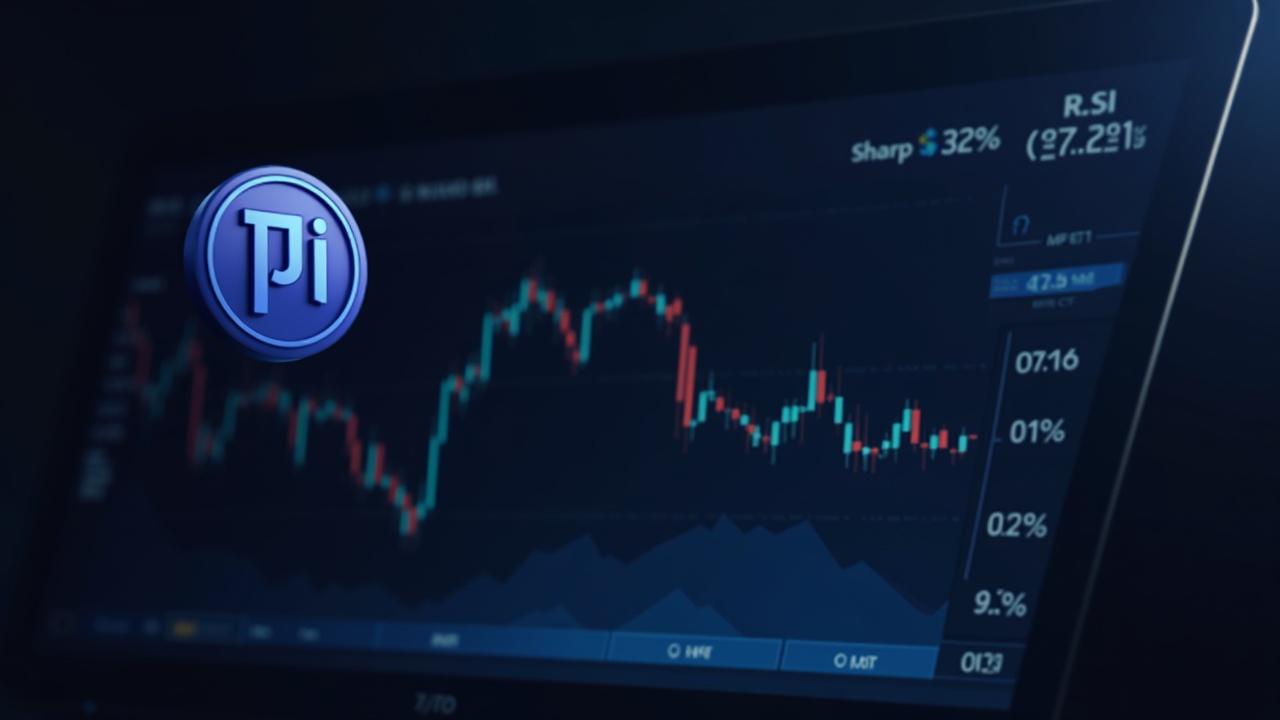A Fleeting Rally Amidst Structural Weaknesses
The recent 32% price spike in Pi Coin (PI) that quickly reversed is a textbook example of a bear market rally, or what traders often call a “dead cat bounce”. This pattern occurred within a specific technical context. While the Relative Strength Index (RSI) showed a short-term improvement in momentum, a more telling indicator, the Chaikin Money Flow (CMF), plummeted to its lowest level in nearly two months.
This divergence is critical; the CMF measures the flow of money in and out of an asset, and its sharp decline indicates that the price jump was met with massive institutional selling and profit-taking, not sustained buying interest. This created a fragile rally that was destined to fail, as the underlying market sentiment remained overwhelmingly negative.
The price now sits at a crucial juncture. Key support is found at $0.229, a level that currently aligns with its major support floor. A decisive break below this could trigger a steeper decline toward $0.209 and even $0.198. This precarious technical position is a direct reflection of deeper, fundamental issues within the Pi Network ecosystem.
The Fundamental Challenges Behind the Price Action
Pi Coin’s struggle to maintain value is not just a technical problem; it’s rooted in several core challenges that have undermined investor confidence since its mainnet launch on February 20, 2025.
-
Unmet Market Expectations and Technical Hurdles: The transition to the Open Mainnet was highly anticipated but failed to meet market expectations. Promised rich application scenarios have been slow to materialize, and the network has reportedly faced technical issues, including transaction delays and instability, which damage user experience and trust. Furthermore, a significant gap exists between the reported millions of users and actual on-chain activity, with data suggesting only a tiny fraction of wallets show daily activity, revealing a weakness in genuine user engagement.
-
An Uncertain Economic Model and Regulatory Scrutiny: The project’s “social mining” model, while successful in attracting a large initial user base, may have incentivized users seeking quick rewards rather than long-term belief in the project’s value. As mining rewards slow, these users can easily become sellers, creating constant downward pressure on the price. The lack of a clear deflationary mechanism exacerbates this issue as market circulation increases without sufficient demand to balance it. Additionally, Pi Network’s unique model and global user base have attracted close scrutiny from regulators in various countries, creating an overhang of uncertainty.

A Path Forward for Pi and Its Holders
For the project to have a chance at a genuine recovery, it must transition from a speculative asset to one with tangible utility. The most critical catalysts would be listings on major, regulated exchanges (often called “Tier-1” exchanges) to improve liquidity and accessibility, and the successful launch of widely-used on-chain applications that demonstrate clear utility for the PI token.
For traders and treasury managers holding PI, this environment demands caution. The conflicting signals between momentum (RSI) and money flow (CMF) make the market prone to these false rallies that can trap buyers. It is crucial to monitor the key support levels mentioned above. A break below $0.229 could signal a new leg down, making risk management through prudent position sizing and clear exit strategies more important than ever.
In summary, while Pi Network boasts a large community and an innovative mobile-first concept, its current price action reflects a crisis of confidence driven by unmet expectations, technical growing pains, and an unproven economic model. Until the project can demonstrate real-world utility and secure broader market infrastructure, any talk of a lasting recovery is likely premature.


